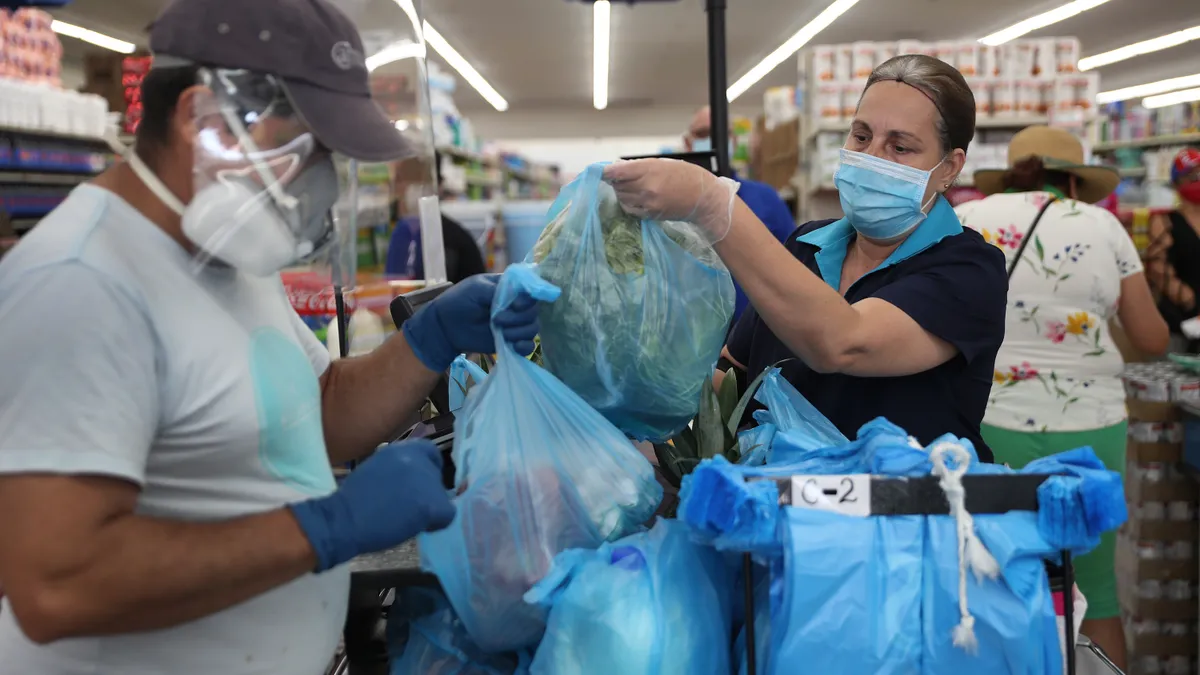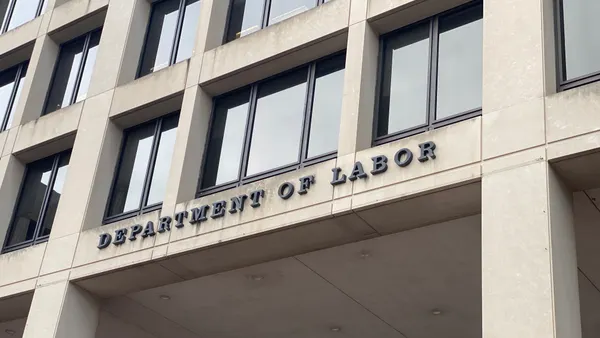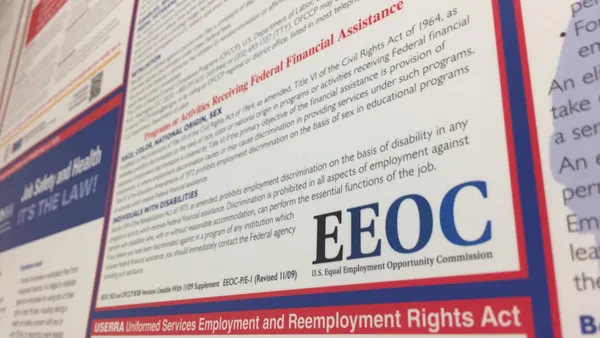As coronavirus cases dwindle and vaccination rates climb, New York is enacting a law that establishes workplace safety standards for future public health crises.
The Empire State's legislation should prompt employers operating elsewhere to keep watch for safety developments at the state and federal levels, Fisher Phillips Partner Todd B. Logsdon said. "Take the temperature of the state you're in to see if you think that something like this is on the horizon," Logsdon, co-chair of the firm's workplace safety practice, told HR Dive in an interview.
The New York law is expansive, Fisher Phillips Associate Amanda M. Blair said. It has two parts: One orders the Department of Labor and the Department of Health to create industry-specific standards that prevent airborne illnesses, and the other requires employers to allow employees to form workplace safety committees.
The model standards will likely touch on topics made familiar by the coronavirus pandemic. They may cover employee health screenings, cleaning protocols and personal protective equipment, Blair said.
New York has yet to publish the standards; Blair, who's based in the state, expects them later this summer. Once they arrive, employers will need to adopt them or create a prevention plan that complies with them, Blair said. The plan will need to be distributed to employees, added to employee handbooks and posted at work sites.
One portion of the law includes a cause of action, though amendments are in the works to limit the risk of litigation. "But it's pretty serious," Blair said, "that an employee can have the right based on this law to say ‘I'm not going to work because you're not compliant with these minimum standards,' or ‘I have protection from retaliation for raising concerns about safety in the workplace.'"
The second part of the law does not obligate employers to form safety committees with employees. Should employees form a committee, however, the employer must start keeping track of the safety measures it is putting in place and share that information with the committee.
As employers outside New York consider this legislation, they'll want to pay close attention to what's brewing in their own jurisdictions, Logsdon said. Generally, workplace safety regulations come from federal or state Occupational Safety and Health Administrations. New York doesn't have a state OSHA, so it falls into the jurisdiction of the federal OSHA, which is still working on the emergency temporary standard regarding coronavirus. "But I guess they've decided they're tired of waiting on federal OSHA and they're passing this law to address the pandemic issues and potential future ones," Logsdon said.
Four of the 22 states with state OSHAs have passed emergency standards on COVID-19: Virginia, Michigan, Oregon and California. Employers operating in those states will likely be aware of what those standards require, Logsdon said.
The remaining 18 states could take a similar approach, but it's probable that they're waiting to see what federal OSHA will do, Logsdon said. Other states could take New York's lead.
Most employers are waiting to see what federal OSHA will do next, especially in the wake of the recent guidance from the Centers for Disease Control and Prevention that says fully vaccinated individuals need not wear a mask or social distance in any setting. "The more people who are vaccinated and the more time goes on, the less likely OSHA is going to have the grounds to issue an emergency temporary standard," Logsdon said.












